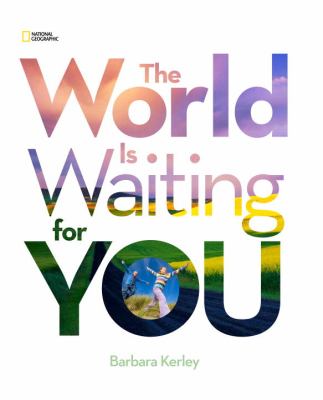IB MYP Community Project season is upon us at my campus so I have created a ThingLink interactive image to help students select their project topics and develop their action plans. For those of you who are unfamiliar with the MYP, the Community Project is the culminating event of the MYP for programmes concluding in Year 3 (8th grade for my school). This project requires students to engage in service learning through direct service, indirect service, advocacy, or research; the process aligns with Catheryn Berger Kaye’s five stages of service learning.
The image is currently “on display” in my library on the Boxlight 84’’ Interactive Flat Panel screen. This screen is enormous, and the students absolutely LOVE it. Even the most basic tasks, such as searching the online catalog (which is available on FOUR dedicated desktop computers every single day), have students clamoring for a turn. It’s a great tool for engaging students due to its size and interactive capabilities. Of course, if you don’t have a giant touchscreen, the interactive image also works on tablet devices, phones, and laptops/PCs. I have a ThingLink Premium Plan for Education (Teacher) which I purchased for a reasonable annual fee, but ThingLink also offers a free version that is quite useful. I encourage you to create a few images to see how you like it before purchasing a subscription; I have used it several times with students and regularly post images on the interactive screen.
When selecting resources for this interactive display, I chose to focus on individual stories and/or the process of service learning (action) rather than the more academic texts that will be useful as students further investigate their chosen topic. I wanted to provide a selection of engaging books and inspiring role models to excite students about the project. Titles like Get Real or Your Water Footprint are certainly topic based, but they have lots of facts and figures presented in an easy to read manner, often through graphics, making the titles accessible to our reluctant readers. I also selected titles that my library owns (or can be accessed electronically) so that students can use the resources immediately. I think that some of our students, especially those who are reluctant readers or who don’t tend to be intrinsically motivated about school projects, will benefit greatly from the overview the display provides. While not as beneficial as reading one (or more) of the books, the videos and web resources on the interactive image will also provide a platform for independent investigation for those who struggle with the research process.
As you know, I believe that learning is always an adventure, and the Community Project offers our students a chance to explore a community of their choice (their neighborhood, and orphanage in Africa, a school campus, etc.) and design a way to make it better. Some projects will have an enormous impact and may very well change the way we live each day while others may only impact one or two people. Either way, the process empowers students to set attainable goals and work to positively impact their world, not just in 8th grade, but for their entire lives – an extraordinary adventure.
* The link to the Scholastic Action article about Paige Rawl on the interactive image refers to one of our subscription databases. Here is the citation so you may locate it if you would like to use it with your students:
Brian, S. J. (2014). Bullied by Her Best Friend. (cover story). Scholastic Action, 37(9), 4.

![IMG_0410[1]](http://www.teacheradventures.com/wp-content/uploads/2015/12/IMG_04101-300x225.jpg)
